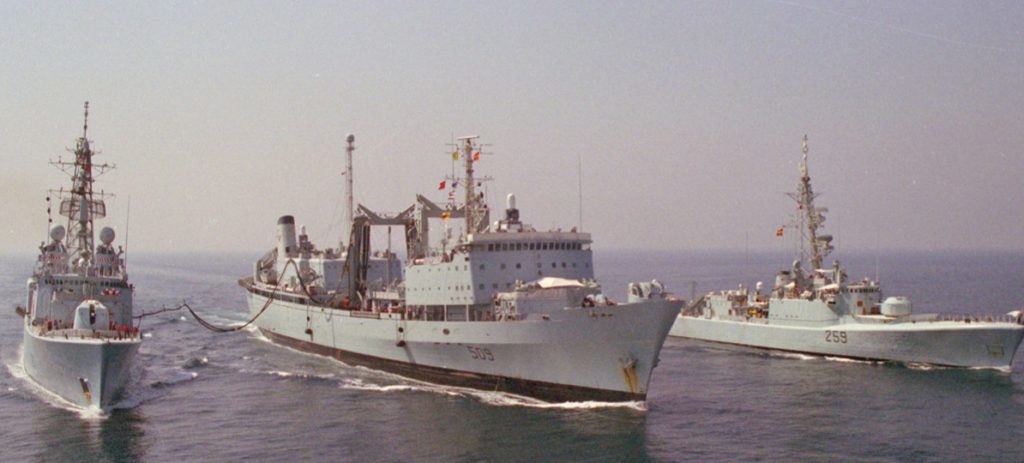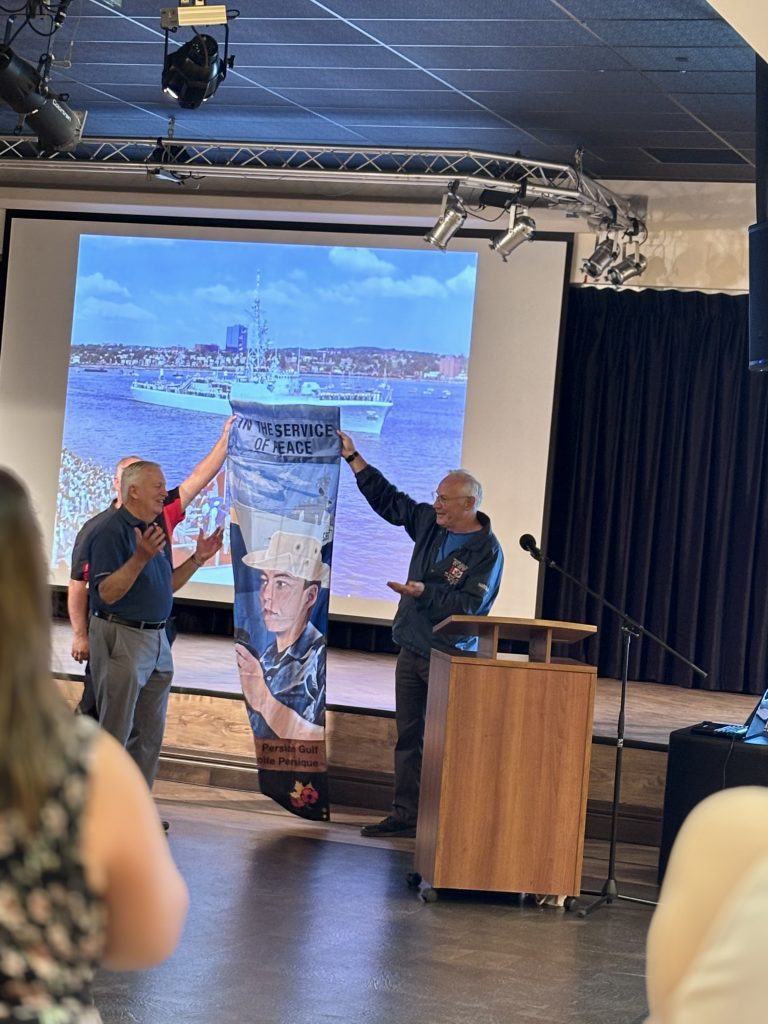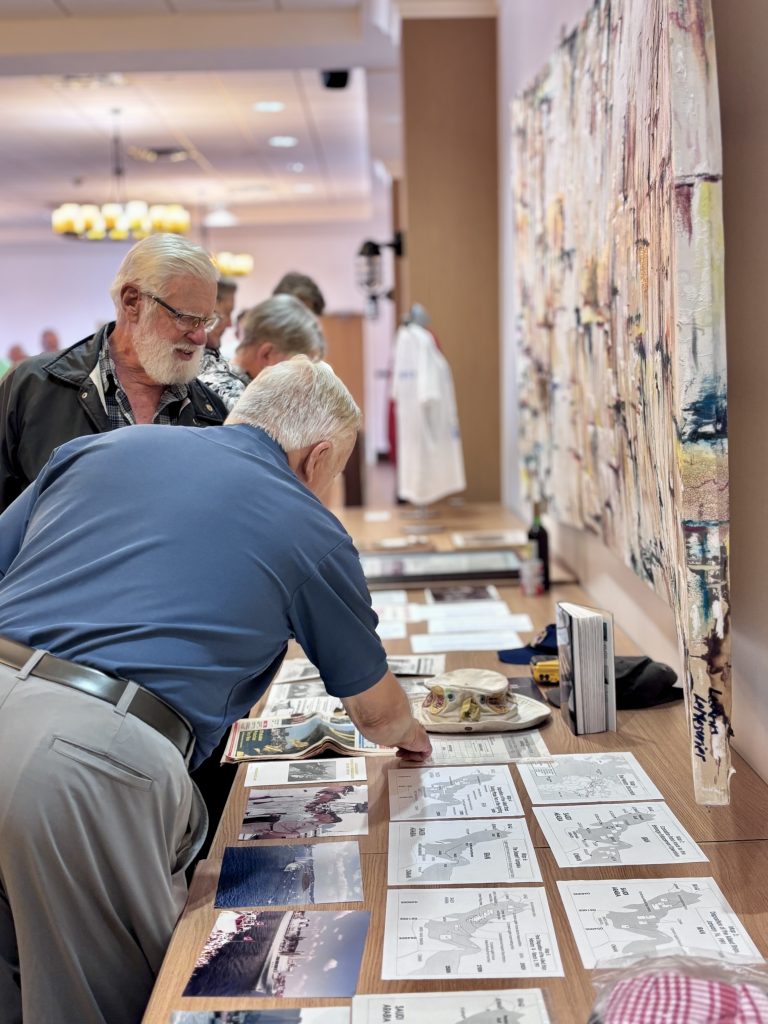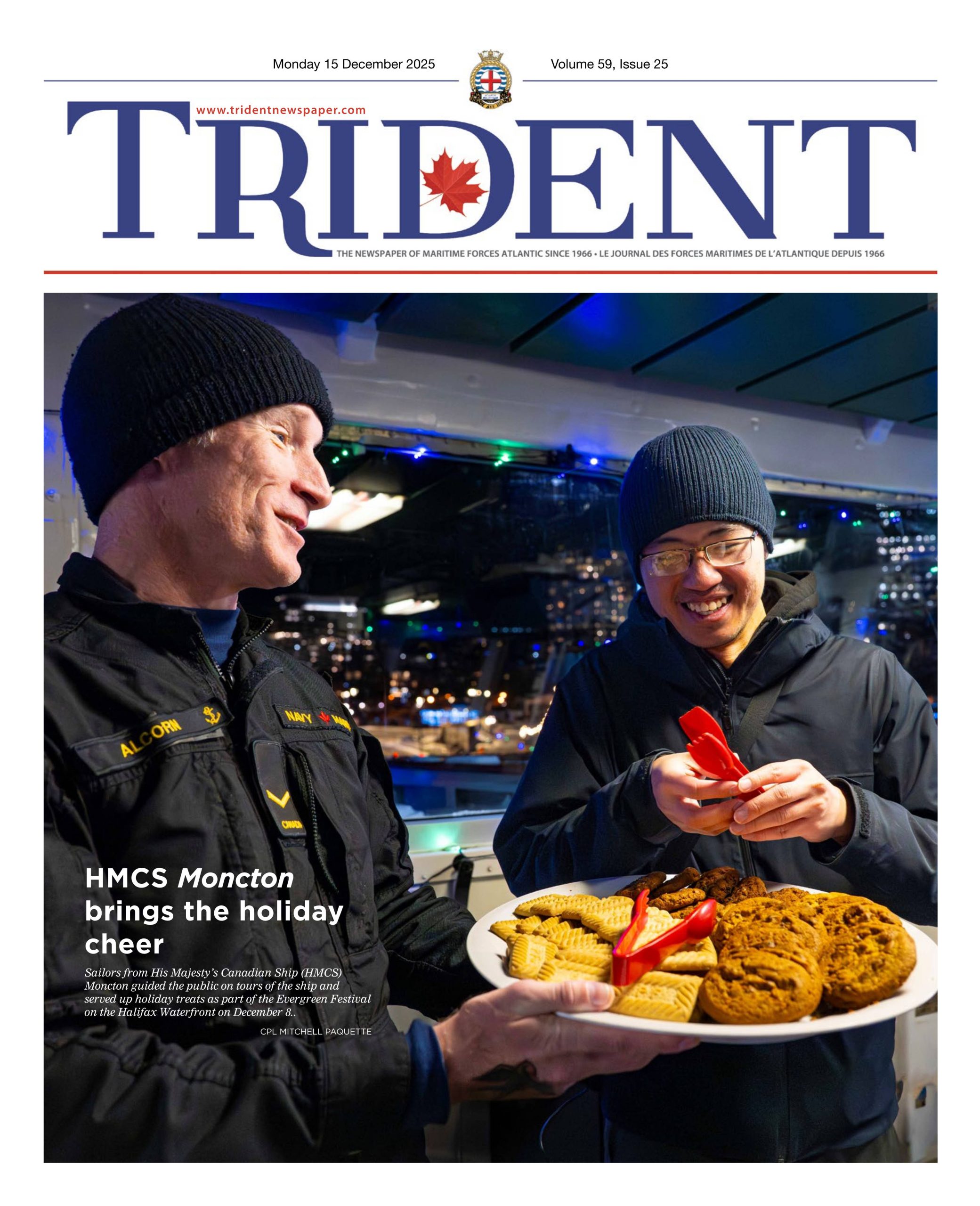
Naval Museum hosts veterans to mark 35 years since Gulf War deployment
By Nathan Stone,
Trident Staff
On August 24, 1990, three ships of the Royal Canadian Navy (RCN) sailed for the Persian Gulf as part of a 42-nation coalition opposing Iraq’s invasion of Kuwait. Thirty-five years later, the Naval Museum of Halifax gathered veterans of that mission to share memories and honour their accomplishments.

ARIANA HOUSE
His Majesty’s Canadian Ship (HMCS) Athabaskan, HMCS Terra Nova, and HMCS Protecteur formed a vital part of the coalition fleet. Arriving in the Gulf on October 1, 1990, they remained until March 1991, after the conflict’s end.
The ship’s veterans and their families attended the event in Mr. Mac’s Room in Tribute Tower on the afternoon of August 28. The museum had furnished the space with artifacts from their deployment on Operation Friction and a slideshow displayed pictures of the ships and their crews.
A place of pride was given to a length of rope that Canadian sailors used during the deployment to mark days at sea by adorning it with coloured ribbons. Beside it lay a new rope, on which attending veterans could affix ribbons bearing their own names.
Naval Museum Director Jennifer Denty said the museum will keep the new rope to commemorate the event. She added that she hoped displaying the Gulf War collection might inspire veterans to donate memorabilia of their own.
The crowd spent most of the event socializing, catching up and swapping stories with old friends while taking in the museum’s displays.
The event was held in partnership with the Persian Gulf Veterans of Canada. Its president, Harold Davis, addressed the crowd and highlighted the teamwork that ensured Canada’s three ships were ready to shoulder more than their share of the mission.
“The dockyard did an amazing job and Shearwater did an amazing job with the Sea Kings that went out with us. It was all part of the reason that we did 25 percent of the interdictions with only three ships.”
Intercepting Iraqi blockade runners and inspecting the cargo on ships in the area was only a small part of the Canadian task forces responsibilities. When the United States began Operation Desert Storm on January 17, 1991, Canada’s Naval Task Group Commander, now Vice-Admiral (ret’d) Duncan Miller, was requested to assume control of the Coalition Logistics Force.
This made him the only officer outside the United States Navy assigned a warfare commander role during the conflict, a task he undertook from Athabaskan, fitted as his command ship.
The three Canadian ships would continue to distinguish themselves throughout the deployment.
When USS Princeton struck a mine off Kuwait City, HMCS Athabaskan, using its mine-avoidance sonar, led the ship safely out of the minefield.
HMCS Terra Nova escorted more vessels through the Strait of Hormuz than any other coalition warship, while HMCS Protecteur was among the busiest replenishment ships, refueling 70 vessels from 10 different nations.

Rear-Admiral (RAdm) Josée Kurtz also attended the event. She recalled being a young officer in training during the Gulf War, watching preparations from Fleet School Atlantic and later hearing of the task force’s accomplishments.
“I saw from my very inexperienced classroom chair, the hustle and bustle that was happening as the ramping up and preparations were occurring in the dockyard… All of us in that classroom would have done anything to sail in one of those three ships.”
She described the “herculean” efforts that went into preparing the task force in just two weeks, adding that it remains just as vital today for the Navy to generate a force at speed.
Now VAdm (ret’d) Miller attended as well. He was presented with a banner that had hung in Ottawa for the Gulf War’s 25th anniversary — a gift from members of the Persian Gulf Veterans of Canada.
He reflected on how special the mission felt and how “thousands lined the streets” in Halifax to see the ships depart.
He praised the crews’ readiness to serve and their exemplary “collaboration and coordination” during the deployment, qualities he said still define the RCN.
“More Canadians should know about that. That’s the way the navy was there. That’s the way the navy is today.”
For Miller, there is no better example of a Canadian naval deployment.
“I term it the most successful operation the Canadian navy has had in history, because we all came back.”






